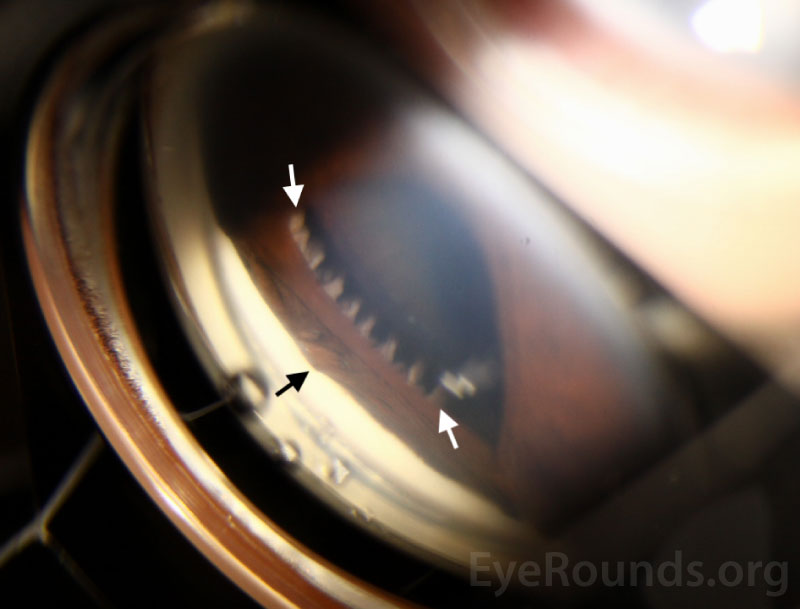
Peripheral anterior synechiae (PAS) are adhesions of the peripheral iris to the structures in the angle of the anterior chamber. They may be associated with a variety of conditions such as angle closure glaucoma, neovascular glaucoma, uveitis, and iridocorneal endothelial (ICE) syndrome.
This series of images was obtained in a 30-year-old female who presented for evaluation of an abnormal pupil and was subsequently diagnosed with iridocorneal endothelial (ICE) syndrome.


Ophthalmic Atlas Images by EyeRounds.org, The University of Iowa are licensed under a Creative Commons Attribution-NonCommercial-NoDerivs 3.0 Unported License.